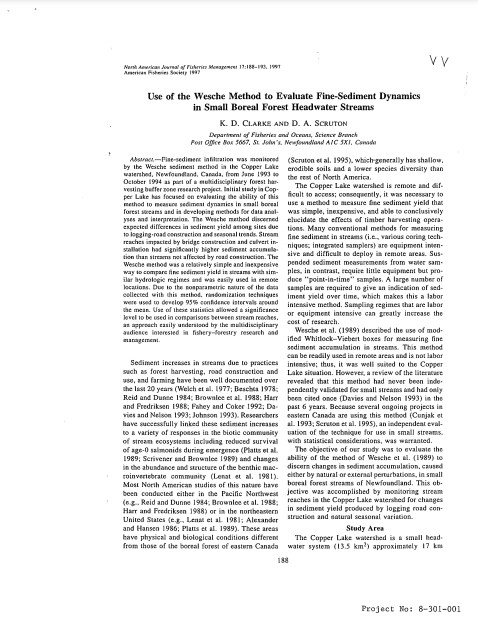Use of the Wesche method to evaluate fine-sediment dynamics in small boreal forest headwater streams
Bosque Modelo:
Western Newfoundland
Temática:
Conservación
Tipo de documento:
Artículo científico
Resumen
Fine-sediment infiltration was monitored by the Wesche sediment method in the Copper Lake watershed, Newfoundland, Canada, from June 1993 to October 1994 as part of a multidisciplinary forest harvesting buffer zone research project. Initial study in Copper Lake has focused on evaluating the ability of this method to measure sediment dynamics in small boreal forest streams and in developing methods for data analyses and interpretation. The Wesche method discerned expected differences in sediment yield among sites due to logging-road construction and seasonal trends. Stream reaches impacted by bridge construction and culvert installation had significantly higher sediment accumulation than streams not affected by road construction. The Wesche method was a relatively simple and inexpensive way to compare fine sediment yield in streams with similar hydrologic regimes and was easily used in remote locations. Due to the nonparametric nature of the data collected with this method, randomization techniques were used to develop 95% confidence intervals around the mean. Use of these statistics allowed a significance level to be used in comparisons between stream reaches, an approach easily understood by the multidisciplinary audience interested in fishery–forestry research and management.
Información Bibliográfica
Autor:
Clarke, KD and DA Scruton.
Revista:
North American Journal of Fisheries Management
Año:
1997
N°:
1
País :
Canadá
Páginas:
188 - 193
Volumen:
17
Idioma:
Ingles
Palabras claves
Model forest, Adaptatation, Canada





